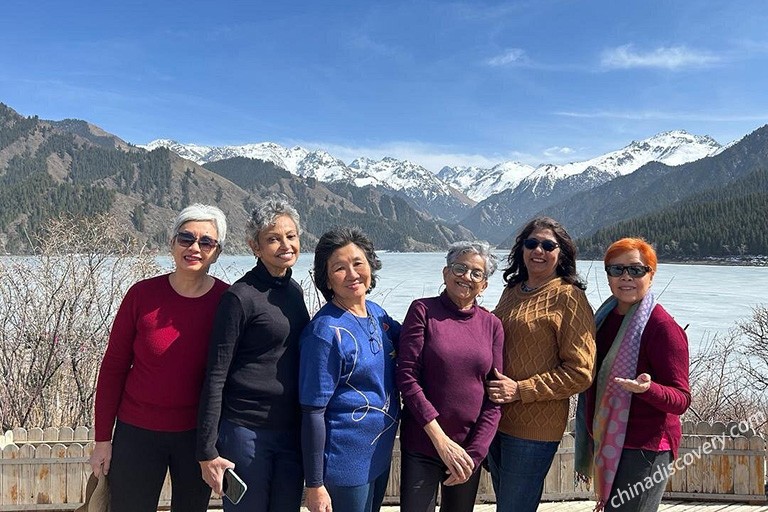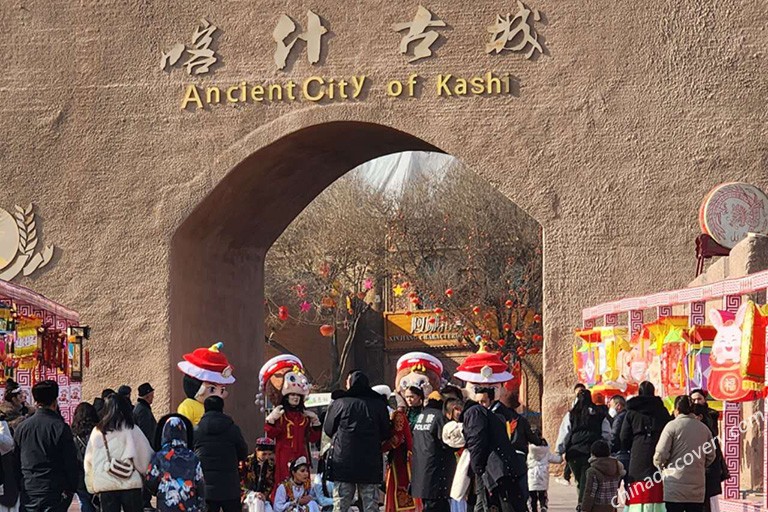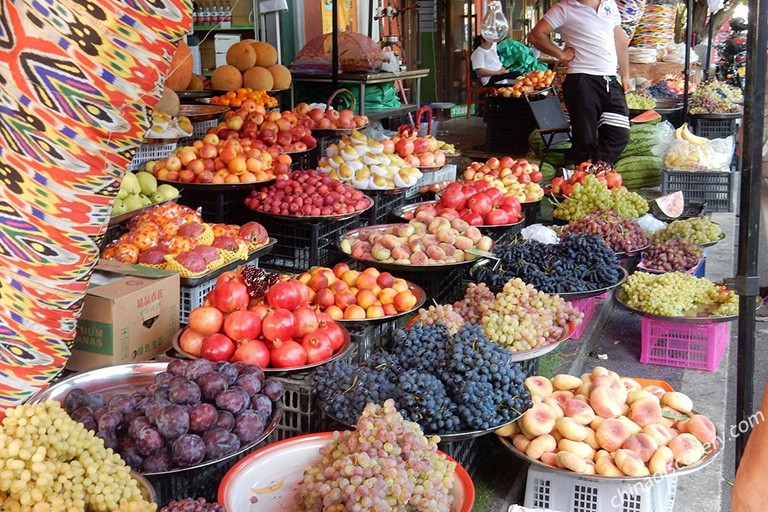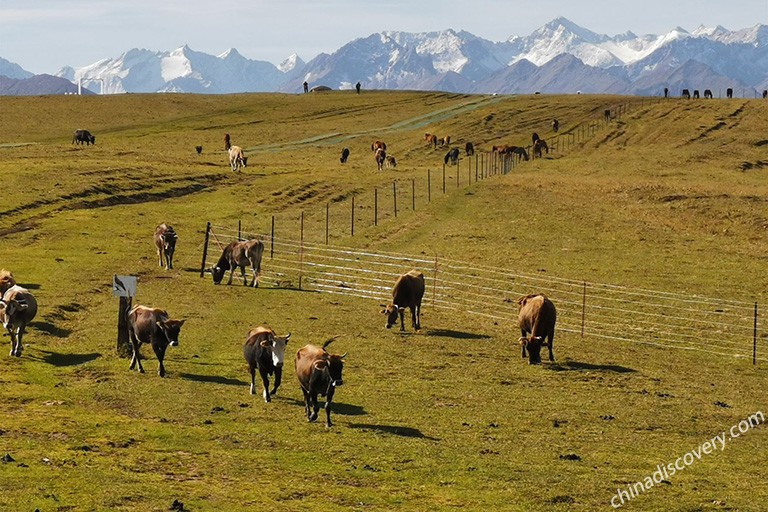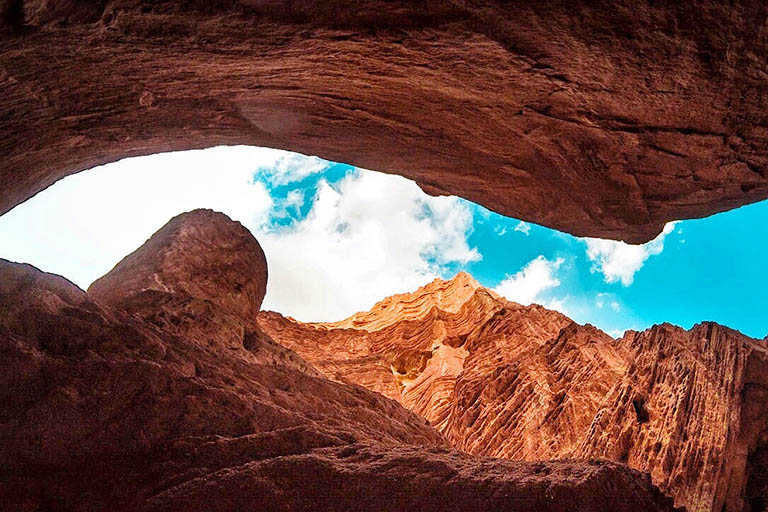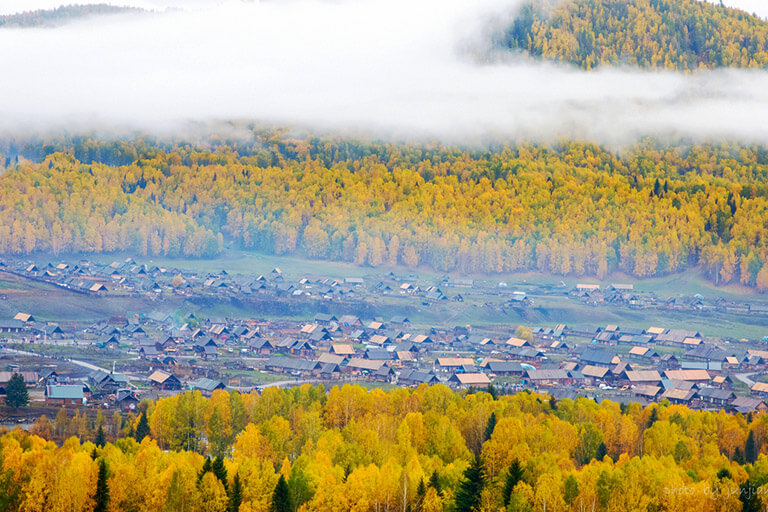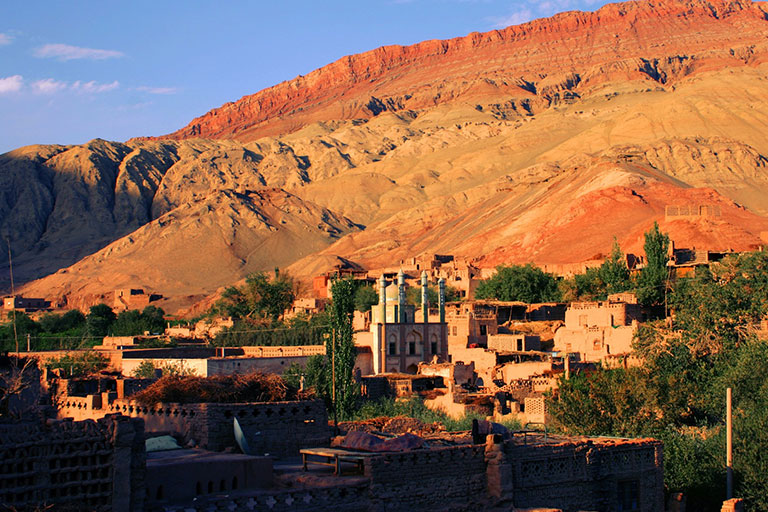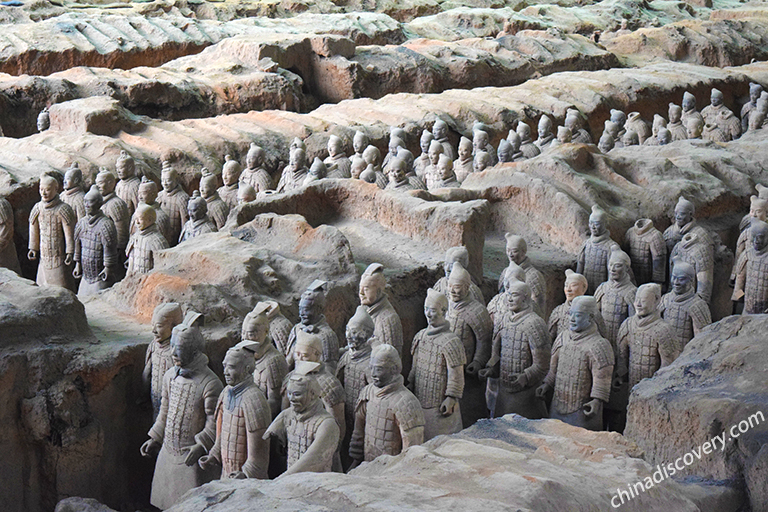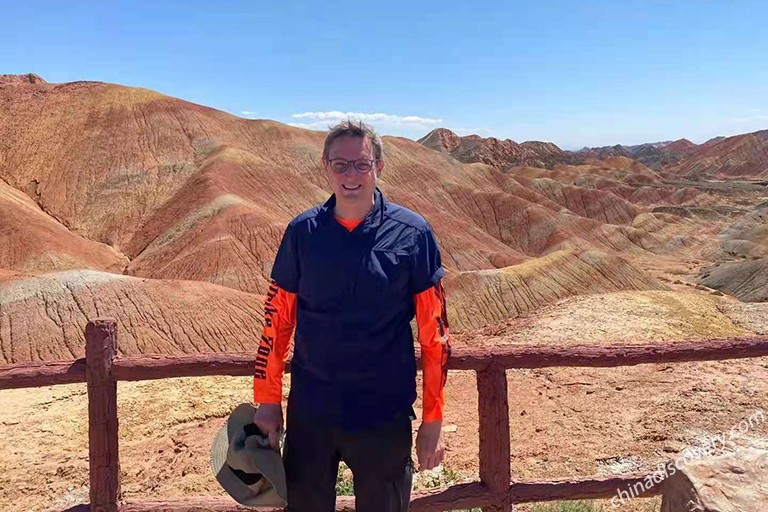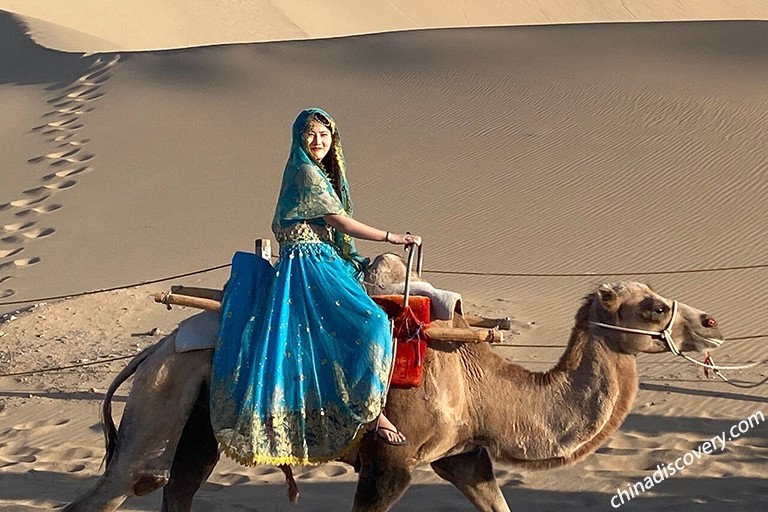Xinjiang, short for Xinjiang Uygur Autonomous Region, is China’s largest provincial region (nearly 1/6 of China's total territory) and one of the five autonomous regions for ethnic minorities. Urumqi is the capital of Xinjiang. Xinjiang is located in northwest China and hinterland of Eurasia, completely landlocked. It borders Gansu, Qinghai and Tibet in China and 8 Asian countries (Russia, Mongolia, Kazakhstan, Kyrgyzstan, Tajikistan, Afghanistan, Pakistan and India) with over 5700-km borderline. Xinjiang was called the Western Regions during the Silk Road periods, and later changed its name to Xinjiang, which means “New Frontier” in the late Qing Dynasty.
With the improvement of transportation and economy, Xinjiang has become one of the most popular tourist regions in China. Different sorts of outstanding natural beauties, historical and cultural sites, distinctive minority ethnic cultures and customs and foods and fruits attract more and more visitors to discover the charms of Xinjiang. Xinjiang is home to fairyland Kanas Lake, idyllic Hemu Village, majestic Tianshan Mountains, the world’s largest desert - Taklamakan Desert, Tarim Basin and many other gorgeous sights and a multi-cultural region where different minority groups and religions harmoniously exist.
Why Visit Xinjiang:
-
A Wid Variety of Beautiful Natural Sceneries. “Three Mountains Encases Two Basins” summarizes Xinjiang’s topographic feature. The Altai Mountains lie in the north of Xinjiang, Kunlun Mountains stands in the south while Tianshan Mountains spans central Xinjiang and divides Xinjiang into two parts - Northern Xinjiang and Southern Xinjiang. Between them are Junggar Basin and Tarim Basin. Lots of unique and magic natural beauties have been formed in and around these terrains, including mountain lakes - Kanas Lake, Heavenly Lake of Tianshan Mountains, Sayram Lake, Bosten Lake (China’s biggest inland freshwater lake), Karakul Lake, vast grasslands - Karajun, Narati, Tangbula, unique Danxia and Yardang landform, like Rainbow Beach, Urho Ghost City, wild deserts - Taklamakan Desert, Kumtag Desert, grand canyons - Dushanzi, Tianshan Grand Mysterious Canyons... Xinjiang’s diversity of natural landscape shocks all visitors.
-
Massive Silk Road Cultural Heritages. In history, there are many minority regimes formed and disappeared in Xinjiang. And, through the three routes of Silk Road, people from different areas brought different products, arts and cultures, met and blended in Xinjiang. Now, Xinjiang preserves numerous historical and cultural relics along the over 5000-km-long Silk Road, including 6 UNESCO World Cultural Heritage sites. Main cultural attractions consist of ancient ruins - Jiaohe, Gaochang Ancient Cities, Niya Ruins, ancient tombs - Astana Tomb, Tombs of the Yarkand Khans, ancient Buddhist grottoes - Kizil Caves, Bezeklik Thousand Buddha Caves, etc.
-
Diverse Ethnic & Religious Culture and Customs. Xinjiang has been a multi-ethnic region since ancient times. Now Xinjiang owns 56 ethnic groups and mainly has Uygur, Kazak, Mongolian, Hui, Kyrgyz and other minority people. They all live in a harmonious coexistence and keep their own special lifestyle, arts, customs, food, singing and dance and culture. So, it’s fantastic to experience various authentic ethnic cultures in Xinjiang that are hardly seen somewhere else. Meanwhile, Xinjiang is a multi-religious land where different kinds of elegant religious architectures and devout pilgrims get along with each other.
-
A Land of Melons and Fruits. Thanks to the special geographic location and huge temperature difference between day and night, Xinjiang outputs an extensive range of tasty fruits and melons, including Turpan’s grape, Korla’s pearl, Hami’s melon, Aksu’ apple, Yecheng’s pomegranate and Southern Xinjiang’s apricot, fig, and nuts like Badam, red date, etc. You can taste at major attractions and purchase some in a local bazaar.
-
Abundant Tasty Xinjiang Foods and Snacks. Like diet style in Northwest China’s Gansu and Qinghai, Xinjiang Cuisine features wild and big portions. Starchy foods and Mutton are the main courses. Try some local dishes and snacks to understand the food culture in Xinjiang. Dapanji, roasted and boiled mutton are popular local meals. Meat lovers will love Xinjiang if you’re ok with the flavors. Various hand-made snacks in a bazzar and night market are also interesting things to taste. Besides, the high-quality pasture makes Xinjiang’s dairy products much richer and more tasty than others you’ve drunk. Just give yourself a bite of Xinjiang!
- ......
Top Travel Destinations in Xinjiang
Xinjiang, with a land area of over 1.66 million square meters, governs 4 prefecture level cities (Urumqi, Turpan, Karamay, Hami), 5 minority autonomous prefectures (Ili Kazakh/Bayinggolin, Bortala Mongol/Kizilsu Kyrgyz/Changji Hui Autonomous Prefectures) and 11 county-level cities (Tumxuk, Beitun...).
Usually, people call the areas in the north of Tianshan Mountains Northern Xinjiang and Southern Xinjiang for another side. And, Northern Xinjiang, most famous for beautiful natural scenery, has destinations, like Urumqi, Altay (Kanas), Bortala (Sayram Lake), Ili with stunning grasslands, Karamay, etc. Southern Xinjiang features cultural charm in Kashgar, Hotan, Kucha (Kuqa), Shache and so on. Among them, Urumqi serves as the gateway to Xinjiang and an important transportation hub in Xinjiang. Urumqi, Turpan and Kashgar are “golden triangles” and top must-visit destinations. >> Top Xinjiang Travel Destinations
Top Tourist Attractions to Visit in Xinjiang
No other province in China has over one thousand attractions like Xinjiang. Besides, Xinjiang has 83% of total types of China’s tourism resources. That means, Xinjiang is full of points of interest to explore. Here, you can enjoy dreamy and beautiful Kanas Lake, Heavenly Lake of Tianshan Mountain, Sayram Lake, view dense primitive forests, sensational canyons, Danxia and Yardang landform, ride a horse and hike on beautiful grassland, stay in a Tuva wooden house, enjoy winter skiing in Altay, explore historical sites of ancient cities, ruins, tombs, Buddhist caves and so on. Whether you’re a nature lover or a Chinese culture fan, you will always be treated with superb visual feast and once-in-a-lifetime cultural experience in Xinjiang. >> Top Xinjiang Tourist Attractions & Things to Do

Kanas Lake
It’s a fairyland on the earth and god’s private garden where mysterious and beautiful Kanas Lake flows through lush forests and grassland connected shores and autumn colors are amazing.

Hemu Village
Hemu Village is the biggest and most isolated village among the three last remaining Tuva Villages. It’s so serene and idyllic when traditional wooden houses and lifestyle are kept in the original way.
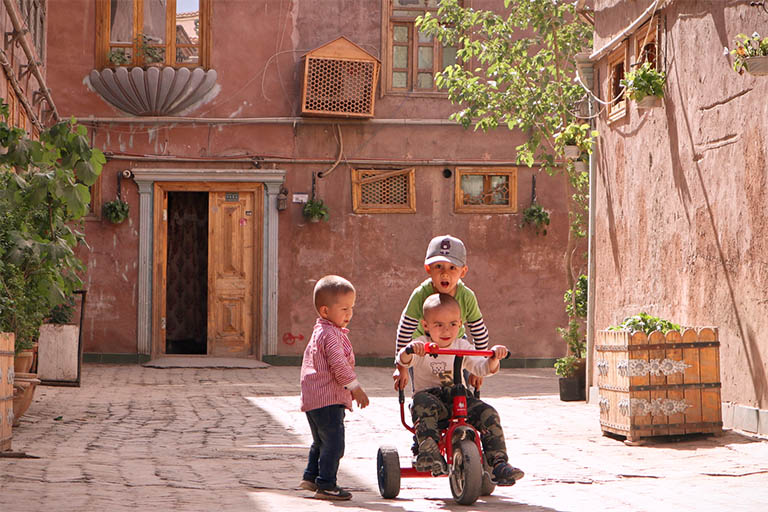
Kashgar Old Town
The old town is the soul of Kashgar and a living exhibition of Xinjiang’s history and ethnic culture. It has old yellow houses with artistic decorations, criss-crossed streets and lanes and many traditional shops to explore.

Jiaohe Ancient City
The leaf-shape ruins of Jiaohe is an UNESCO World Cultural Heritage site, and the world’s largest, oldest and best-preserved earth constructed city with over 2,000 years of history.

Kashgar Sunday Livestock Market
It is the biggest livestock market in Xinjiang where sheep, cattles, camels are traded in traditional simple ways. You can visit there to see the trading scenes and taste delicious local foods.

Kashgar Century-old Teahouse
Many locals love to spend leisure time here with friends in the old teahouse. You can admire the beautiful buildings, enjoy relaxing time as they do and see their real daily life.

Karakul Lake & Muztagh Ata
When driving from Kashgar to Tashkurgan on Karakoram Highway, peaceful and pure Karakul Lake with fantastic reflection of grandiose Muztagh Ata and surrounding snowy mountains are phenomenal sights.

Tashkurgan Stone City
Built on a hill, the “Stone City” was an important ancient fortress and the capital of Puli Kingdom. Now ruins of broken city walls and snecks still tell the glorious past of Tashkurgan.

Sayram Lake
Sayram Lake is a miracle lake known as “the Last Tear of the Altantic”. The high-transparency and serene lake water, green grasslands and woods ashore and distant mountains, floating white clouds, blue sky make a pure and mind-blowing sight.

Naraty Grassland
Naraty Grassland in the hinterland of Tianshan Mountains is one of the most beautiful grasslands in Xinjiang, which is praised as “A Heavenly-like Grassland in the Sky” with unusual beauty.

Karajun Grassland
Best known for the artistic “Human Body Grassland”, Karajun is a hot spot for tridimensional grasslands scenery of imposing snowy mountains, lush woods, vast grasslands dotted with white ethnic yurts.

Taklamakan Desert
Taklamakan Desert is the biggest desert in China. Currently, the most popular way to witness its magnificent wild desert is driving through a desert highway, watching different-shaped sand dunes by the road.
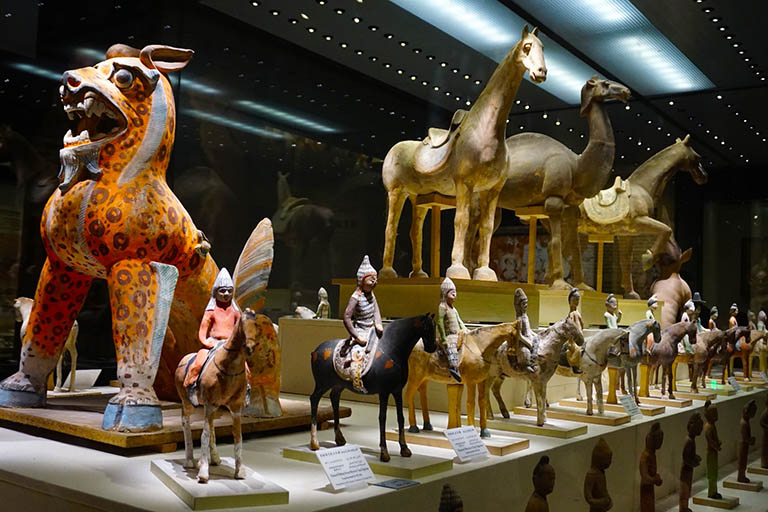
Xinjiang Regional Museum
Located in central Urumqi, the museum is a good window to learn the history and culture of Xinjiang with exhibitions of many cultural relics, unique ancient mummies and ethnic daily scenes.

Flaming Mountain
This place became famous in a great Chinese classic novel. It’s interesting to see fire-like red mountain ranges and experience super heat here. Surrounding local lifestyle, cultural sites and sweet grapes shouldn’t be missed.

Bezeklik Caves
It is a Buddhist art treasury with dozens of extant caves and more than 1200-square-meter murals, which proves ancient Turpan (Gaochang Kingdom) once was the religious center.

Kumtag Desert
Kumtag Desert is a desert located nearest to a city in the world. It is also the location of the ancient Loulan Kingdom. Tourists can walk on small sands, enjoy desert Jeep Safari, sand sliding and different interesting desert activities.

Id Kah Mosque
Built in 1442, the mosque is a landmark of Kashgar and the biggest mosque with the largest number of worshippers in Xinjiang. Elegant designs, light colors, beautiful architecture and high religious status attract numerous visitors.

Ili Apricot Valley
During late March to early April, boundless virgin wild apricot bloom, decorating the valley a romantic land with green meadow and those pink and white apricot flowers.

Kizil Caves
Kizil Caves is the oldest Buddhist grottoes in China, nearly 300 years earlier than Dunhuang Mogao Caves. In the numbered 236 caves, many delicate murals are left for exploration of the Buddhist culture, art and ancient lifestyle of the Qiuci Kingdom.
Xinjiang Weather & Temperature - Best Time to Go
Xinjiang, located far away from the sea and landlocked by high mountains, belongs to a typical temperate continental arid climate. Its climate characteristics are little rainfall, dry air, big evaporation, rich sunshine duration (2,500~3,500 hours per year) and large temperature difference. Normally, the precipitation of Northern Xinjiang is higher than that of Southern Xinjiang, while the average temperature is reverse. July is the hottest month in Xinjiang and Turpan’s temperature can rise up to 49.6°C. January is the coldest month, when most areas of northern Xinjiang suffer severe cold under minus 20°C.
●Xinjiang in Spring (March ~ May): Spring comes a little later to Xinjiang. In March and April, most regions in Xinjiang are still very cold. It will become warm until May. Soon, the woods and meadows turn green and wild flowers start to bloom. Snow and ice will thaw as well. So months from May are a good time to travel to Xinjiang. Ili’s Apricot Valley will present stunning blossoms between mid-April and early May and Xinjiang’s grasslands (Narati Grassland, Karajun Grassland) will show refreshing green and dotted colors in this season. >> Xinjiang Weather & Climate
●Xinjiang in Summer (June ~ August): Summer is the peak tourist season of Xinjiang. In July, the monthly mean temperature of Northern Xinjiang is 20 ~ 25°C and Southern Xinjiang has a higher temperature. But scenic areas in the Altai Mountains and Tianshan Mountains normally have a cooler climate. Besides, the temperature varies widely from day to night in Xinjiang, so prepare warm clothes. Turpan in July has an average temperature of 32.2°, and above 38°C from June to August. So prepare the heat in Turpan if you visit it in summer. Glacier runoffs nourish the grasslands and trees all over Xinjiang and make them more beautiful in summer. The top destinations to go are Kanas Lake & Hemu Village, Sayram Lake, Narati Grassland, Karajun Grassland, Turpan, Heavenly Lake of Tianshan Mountains, etc.
●Xinjiang in Autumn (September ~ November): Autumn is actually very short in Xinjiang because temperature drops greatly from October and high-latitude and altitude areas will snow. However, Autumn has fresh air, cool temperatures and most colorful natural scenery, so it’s a high season. Multi-colored forests and grasslands and Southern Xinjiang’s Kashgar, Kucha, Tashkurgan are popular destinations to go to.
●Xinjiang in Winter (December ~ February): Xinjiang in winter is freezing cold. It’s the offseason, because heavy snow will block roads, many scenic areas will be covered, many hotels, restaurants and shops will be closed. However, Xinjiang has rich and special ice and snow, especially the Altay which offers wonderful ski resorts and many winter activities. Kanas Lake and Hemu Village in winter are like real fairyland.
▶ Urumqi Weather & Climate | Kashgar Weather & Climate | Kashgar Weather & Climate | Turpan Weather & Climate
Xinjiang Transportation
Get to Xinjiang
By Air: Xinjiang has the largest number of airports in China among all provincial regions. Urumqi Diwopu International Airport (IATA: URC) serving Urumqi is the most important and commonly used airport in Xinjiang. It is the air gateway to Xianjiang and an air transportation hub to Kashgar and other destinations to Xinjiang. You can directly fly from Beijing, Chengdu, Harbin, Hohhot, Guilin, Guangzhou and other Chinese cities to Urumqi, and take fast air travel from Urumqi to Burqin Kanas, Kashgar, Hotan and many other places in Xinjiang by provincial flights.
▶ Urumqi Diwopu International Airport | Kashgar International Airport
By Train: For train travelers, the most popular way to get to Xinjiang is taking a bullet train on the Lanzhou-Urumqi High Speed Railway. Xinjiang has several stops and Turpan and Urumqi are the most popular two. You can take a bullet train to Turpan and Urumqi from Gansu’s Lanzhou, Zhangye, Jiayuguan, Dunhuang (Liuyuan), Tianshui, Xining of Qinghai, Xian and Xian. Dunhuang is most recommended for an acceptable train time. If you start from other long-distance cities, you’d better drop by Zhangye and destinations en route to shorten the long train ride.
Get Around Xinjiang
By Air: Urumqi Airport has many provincial flights to other major destinations. If you’re a tight-schedule travel and travel long-distance destinations like from Urumqi to Kashgar, Kanas, you can take a flight to transfer among destinations efficiently and view the magnificent Tianshan Mountains from the air.
By Drive: Making a road trip via a private car is the most popular way to finish the regional loop tours in Northern and Southern Xinjiang. You can not only enjoy convenient pick-up, safe travel, but also have great chances to visit attractions on the way and flexibility to arrange your itinerary. China Discovery is a professional, experienced and reliable travel companion who provides all-inclusive Xinjiang tour packages including the transfer service. You’re highly advised to make full use of our services to explore Xinjiang worry free. Please note that some road trips take lots of hours, but the landscape en route is really amazing.
By Train: Xinjiang has built a railway network among major cities. But normal trains take a lot of time, which is very time-consuming and inconvenient for travelers.
▶ How to Get to Urumqi & Get around Urumqi | How to Get to Kashgar & Get around Kashgar
▶ How to Get to Turpan & Get around Turpan | How to Get to Kanas Lake | How to Get to Xinjiang & Get around Xinjiang
Xinjiang Accommodation: Where to Stay
Xinjiang has different accommodation places, choices and conditions, depending on your trip itinerary, budget and personal preference. Major tourist destination cities and counties, like Urumqi, Kashgar and Turpan, have fairly good accommodation. You can select from star-rated hotels with complete facilities and clean, comfortable rooms, to mid-ranged hostels and local budget guesthouses. Normally, the downtown area is the best place to stay overnight. Kashgar Old Town has many unique decorated hotels. In remote mountain scenic areas, such as Kanas Lake & Hemu Village, grasslands in Ili, Sayram Lake in Bortala, the accommodation is limited, and standard hostels and special ethnic yurts with simple facilities are the main options. If you visit Hemu Village, you can stay overnight in a Tuva wooden house to experience the traditional architecture and enjoy pastoral scenery outside.
▶ Places to Stay in Urumqi | Places to Stay in Turpan | Places to Stay in Kashagr | Places to Stay in Kanas & Altay
Useful Xinjiang Travel Map
Xinjiang is surprisingly wide. To help you better know Xinjiang and explore the highlights in limited vacation time, below we list some Xinjiang attraction maps, including the Urumqi Attraction Map, Kashgar Attraction Map, Kanas Tourist Map, etc. All the maps are lately updated and free to download. Meanwhile, please visit All Xinjiang Maps 2021 for more useful Xinjiang travel maps. Check more Xinjiang Maps >>
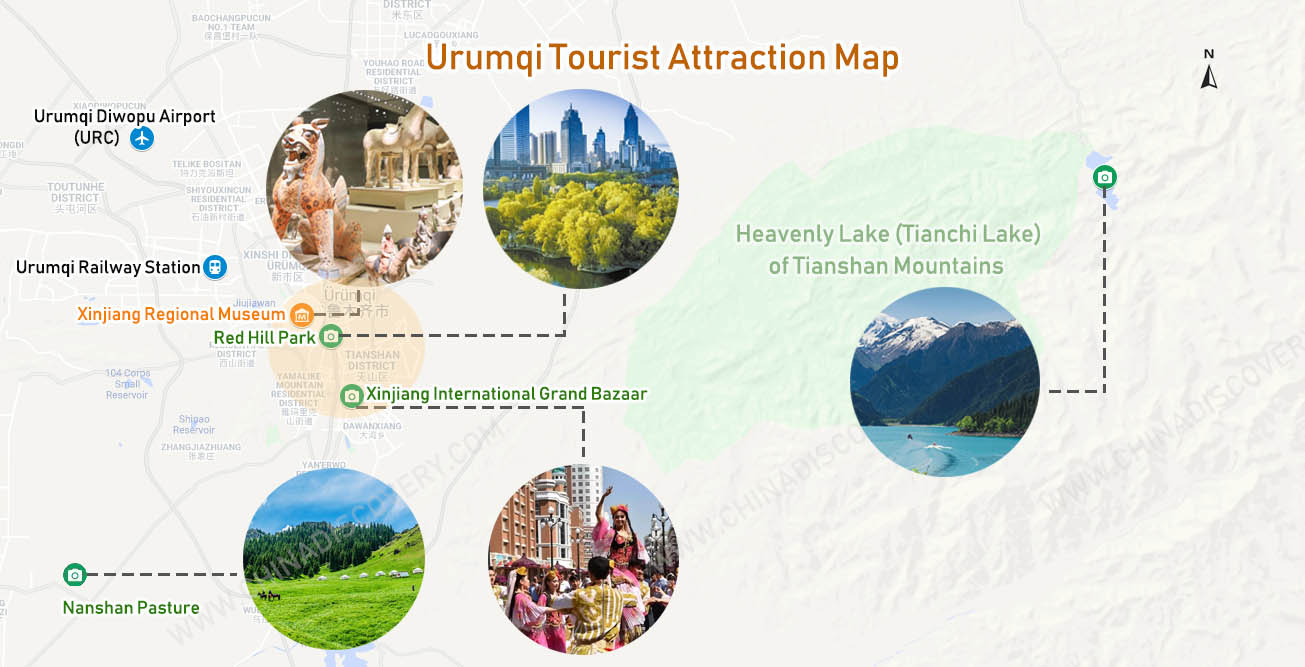
Urumqi Attraction Map

Kashgar Tourist Map

Kanas Tourist Map
Other Destinations along the Silk Road
The ancient Silk Road from Xian to Xinjiang is one of the mysterious and fantastic travel routes in Northwestern China. Urumqi is a stop in the west part and there are more fascinating destinations along the road, including the ancient capital - Xian, Dunhuang with Mogao Caves, Zhanye most known for rainbow-like Danxia mountains, Jiayuguan with Great Wall fortress. Check the following highlights on the Silk Road and select a great Silk Road adventure here.
Start planning your tailor-made holiday to China by contacting one of our specialists. Once
inquired, you’ll get a response within 0.5~23.5 hours.
Customize a Trip



























